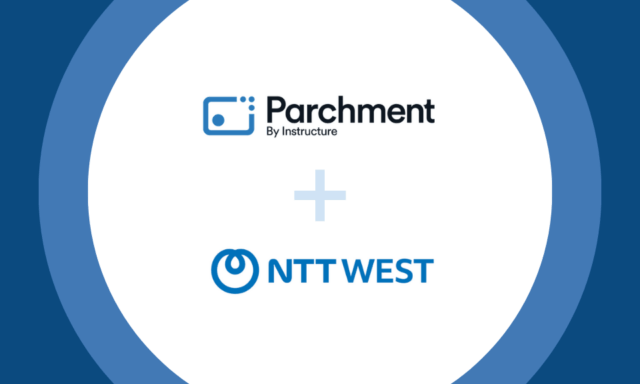
International
Parchment by Instructure and NTT West announce partnership in Japan
Parchment by Instructure is pleased to announce its partnership with NTT West in Japan.

Dual enrollment, sometimes referred to as dual credit or concurrent enrollment, refers to a program enabling high school students to take college courses and earn college credit while also fulfilling requirements for high school graduation.
Participation in dual enrollment has grown significantly in recent years and has become a strategic initiative for many community colleges looking to grow enrollment. However, the economics associated with offering dual enrollment vary widely based on a number of factors.
In this article, we will discuss the potential for dual enrollment to generate an enrollment pipeline, examine the key factors impacting profitability, and share insights on how community college leaders can maximize enrollment and sustainability.
Dual enrollment has become increasingly popular in recent years. According to new data from the U.S. Department of Education, more than 1 in 5 community college students (21%) participated in at least one dual enrollment course in the 2022-23 academic year. This number is even higher in some states, reaching upwards of 57%. In fact, the Community College Research Center reports that, “at 37 community colleges across the country, 50% or more of enrollment was from high school dual enrollment.”
Percentage of Community College Students in High School in 2022-23

Source: Community College Research Center, August 2024
One of the primary drivers of this growth is the opportunity for students to get a head start on their higher education, potentially reducing the time and cost required to earn a degree. As college tuition continues to rise, dual enrollment provides a more affordable pathway, making college more accessible to everybody. It also helps bridge the gap between high school and college, offering a smoother transition and greater support for students who may traditionally face additional barriers to higher education.
While a wide range of universities and state schools offer dual enrollment opportunities, community colleges account for roughly 70% of dual enrollment with four-year colleges making up the remaining 30%. As dual enrollment participation continues to grow, it becomes a more attractive initiative to community colleges looking to increase enrollment.
According to an AACRAO survey, 59% of respondents reported that their institution has incorporated dual enrollment as a strategic enrollment initiative, and 78% use dual enrollment as a recruiting tool.
By engaging with high school students early on, colleges can create a pipeline of prospective students who are already familiar with their academic programs and culture. This early exposure can increase the likelihood that these students will choose to enroll in college full-time after graduation. Furthermore, dual enrollment students often are more prepared and well acquainted with the level of work necessary to excel in higher education, positively contributing to community colleges’ retention and graduation rates.
Community colleges that use dual enrollment as part of their recruitment efforts promote access and equity in higher education. It provides all students, regardless of their background, with a pathway toward post-secondary education, helping to ensure every learner has the opportunity to achieve their academic goals.
While dual enrollment classes are beneficial for college recruitment and student success, incorporating these programs can be costly. Costs are generally dependent on a few different factors, including the mode of instruction. Often, courses taught by college faculty at the college campus or online cost more than courses taught by qualified high school teachers at the high school.
Additionally, dual enrollment funding varies greatly based on the school’s location, free or discounted tuition for high school learners, and the availability of state subsidies, as well as performance funding incentives and grants. CCRC estimates that for a typical community college, revenues cover only 72% to 85% of the costs, meaning that these institutions must budget differently so these programs can be sustainable.
To increase revenue, schools should consider expanding dual enrollment programs rather than scaling them back. This is for three reasons:
When it comes to growing dual enrollment programs, administrative efficiency is crucial, especially time-saving technology that can take the pressure off of staff members. With Parchment Dual Enrollment, community colleges can simplify program management with a digital dual enrollment solution that automates and streamlines workflows for staff, K-12 counselors, learners, and families.
Schedule a meeting to see how our solution can save you time and money so your team can focus on growing your dual enrollment program.
